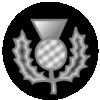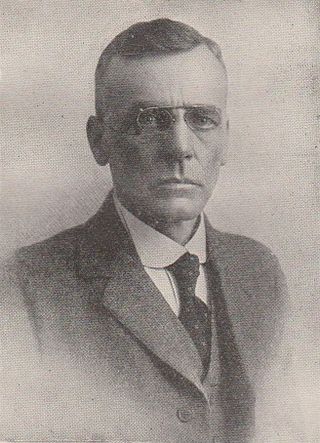Related Research Articles

The 9th (Scottish) Division, was an infantry division of the British Army during the First World War, one of the Kitchener's Army divisions raised from volunteers by Lord Kitchener to serve on the Western Front during the First World War.

The 11th (Northern) Division, was an infantry division of the British Army during the First World War, raised from men who had volunteered for Lord Kitchener's New Armies. The division fought in the Gallipoli Campaign and on the Western Front. The division's insignia was an ankh or ankhus.

The 12th (Eastern) Division was an infantry division raised by the British Army during the First World War from men volunteering for Kitchener's New Armies. The division saw service in the trenches of the Western Front from June 1915 to the end of the war.

The 49th Infantry Division was an infantry division of the British Army. The division fought in the First World War in the trenches of the Western Front, in the fields of France and Flanders. During the Second World War, the division fought in the Norwegian Campaign and in North-western Europe. After the Second World War, it was disbanded in 1946, then reformed in 1947. It remained with Northern Command until finally disbanded in 1967.

The 16th (Irish) Division was an infantry division of the British Army, raised for service during World War I. The division was a voluntary 'Service' formation of Lord Kitchener's New Armies, created in Ireland from the 'National Volunteers', initially in September 1914, after the outbreak of the Great War. In December 1915, the division moved to France, joining the British Expeditionary Force (BEF), under the command of Irish Major General William Hickie, and spent the duration of the war in action on the Western Front. Following enormous losses at the Somme, Passchendaele and Ypres, the 16th (Irish) Division required a substantial refit in England between June and August 1918, which involved the introduction of many non-Irish battalions.

The 17th (Northern) Division was an infantry division of the British Army, a Kitchener's Army formation raised during the Great War.

The 18th (Eastern) Division was an infantry division of the British Army formed in September 1914 during the First World War as part of the K2 Army Group, part of Lord Kitchener's New Armies. From its creation the division trained in England until 25 May 1915 when it landed in France and spent the duration of the First World War in action on the Western Front, becoming one of the elite divisions of the British Army. During the Battle of the Somme in the latter half of 1916, the 18th Division was commanded by Major General Ivor Maxse.

The 46th Division was an infantry division of the British Army, part of the Territorial Force, that saw service in the First World War. At the outbreak of the war, the 46th Division was commanded by Major-General Hon. E.J. Montagu-Stuart-Wortley. Originally called the North Midland Division, it was redesignated as the 46th Division in May 1915.

The 32nd Division was an infantry division of the British Army that was raised in 1914, during the First World War. The division was raised from volunteers for Lord Kitchener's New Armies, made up of infantry 'Pals battalions' and artillery brigades raised by public subscription or private patronage. The division was taken over by the War Office in September 1915. It served in France and Belgium in the trenches of the Western Front for the duration of the war. It saw action at the Battle of the Somme, the Pursuit to the Hindenburg Line, the Defence of Nieuport, the German spring offensive, and the Allied Hundred Days Offensive beginning at the Battle of Amiens. After the Armistice it marched into Germany as part of the Army of Occupation.

The 19th (Western) Division was an infantry division of the British Army, part of Kitchener's Army, formed in the Great War.

The 47th Division was an infantry division of the British Army, raised in 1908 as part of the Territorial Force.

Pontrobert is an ecclesiastical parish that was formed in September 1854. It comprises the townships of Teirtref and part of Nantymeichiaid in the parish Meifod, a portion of Cynhinfa which was in the parish of Llangynyw and portions of the townships of Fachwel, Llaethbwlch and Cadwnfa which were in the parish of Llanfihangel. The total area of this parish is 5,000 acres. As a result of this arrangement, Pont Robert is now divided between the present day Community Councils of Meifod, Llangyniew and Mawddwy. Pontrobert was within the historic county of Montgomeryshire, now forming part of Powys. The name Pontrobert is derived from Robert ap Oliver of Cyhinfa, who built the original bridge over the River Vyrnwy around 1700. An alternative Welsh name for Pontrobert is Pont y ddolfeiniog.
The 22nd Division was an infantry division of the British Army during World War I, raised in September 1914, from men volunteering for Lord Kitchener's New Armies. The division moved to France in September 1915, but it was transferred to Greece only one month later. It served in the Balkans Campaign for the duration of the First World War.

John Henry Barlow, widely called "the outstanding Quaker statesman of his generation", was an ambassador for peace in the war years and clerk of London Yearly Meeting for seven years. He was the person who most held the Society together at a taxing moment in its history. He was one of the first members of the Friends' Ambulance Unit. Later he served 23 years as the first secretary and general manager of the Bournville Village Trust. In 1920 he led a delegation to Ireland to look into the Black and Tans atrocities.

The feudal barony of Hatch Beauchamp or honour of Hatch Beauchamp was an English feudal barony with its caput at the manor of Hatch Beauchamp in Somerset. The site of the mediaeval manor house, to the immediate south of the ancient parish church of St John the Baptist, is today occupied by Hatch Court, a grade I listed mansion built in about 1755 in the Palladian style.

Dolobran, in the county of Montgomeryshire in Wales, is a historic estate which was the earliest known seat of the expansive Lloyd family, prominent Quakers, of which in the 18th century a junior branch, the Lloyd family of Birmingham, seated at Farm, Bordesley, became prominent in and around Birmingham as iron-founders and founded Lloyds Bank, today one of the largest banks in the United Kingdom. The grade II* listed manor house known as Dolobran Hall about 8 miles north-west of the town of Welshpool, is situated in the parish of Meifod to the west of the village of Meifod and to the east of the village of Pontrobert. One of the family historians, Humphrey Lloyd (1975), estimated the historic estate of Dolobran to have comprised about 1,000 acres. In 2015 Dolobran Hall and its 70-acre estate are used for farming and industrial training by the J.M. Evans Partnership. John Meirion Evans (1926–2015) of Dolobran Hall by his wife Edith was father to Maurice, Keith and Robert. In 2008 former farmer Rob Evans founded a company to train construction workers in the use of plant and machinery called "Training For The Future", based at "The Brick Barn Dolobran Hall".

Farm is a historic estate within the former manor of Bordesley, now situated in the area of Sparkbrook, a suburb of Birmingham, England. It has been described as the "focal point in family mythology" for the prominent and wide-spread Lloyd family, Quakers, iron producers and founders of Lloyds Bank.

Sampson Lloyd was a Welsh iron manufacturer in Birmingham, then a small town in the county of Warwickshire, England, and was the founder of the Lloyd family of Birmingham, iron-founders and bankers, which went on to found Lloyds Bank, today one of the largest banks in the United Kingdom.
The Royal Sussex Militia Artillery was a part-time reserve unit of Britain's Royal Artillery from the County of Sussex, which served from 1853 to 1909.
References
- ↑ "Deeds relating to the Lloyd family and to the Dolobran estate". National Library of Wales. Retrieved 23 November 2014.
- ↑ Lloyd, Samuel (1907). The Lloyds of Birmingham. Cornish Brothers.
- ↑ Roberts, Sian (2014). Great war britain birmingham : remembering 1914-18. [S.l.]: The History Press Ltd. p. 112. ISBN 978-0-7509-5969-8.